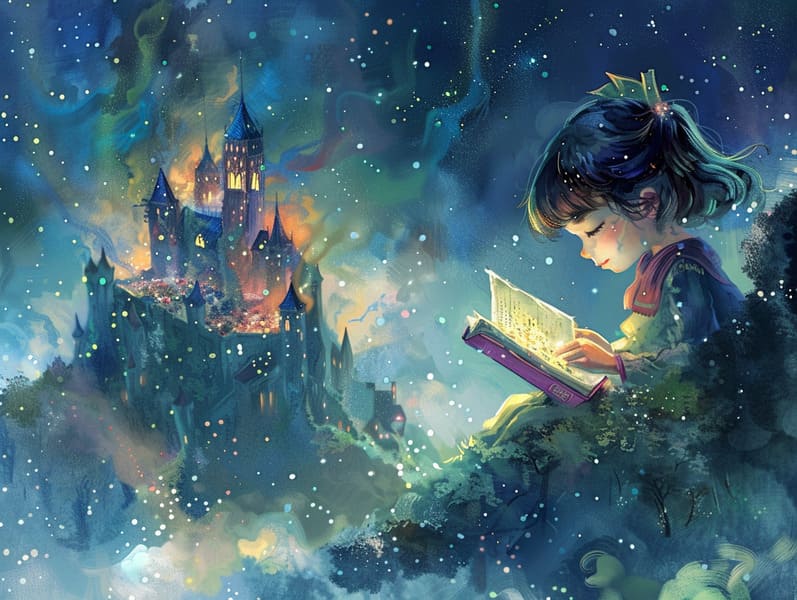The Creation of Fairy Tales for Kids and Its Timeless Wonder.
The Creation of Fairy Tales for Kids and Its Timeless Wonder.
Blog Article

Popular fairy tales have enduring presence. These stories have been recounted from one generation to the next millennia before they were ever documented. They developed from a variety of societies, including Eastern traditions. They were initially transmitted among adults, often carrying themes and messages aligned with the societal norms and beliefs of the time.
The renowned Brothers Grimm, Jacob and Wilhelm Grimm, were among the first to assemble many of these beloved narratives. Their compilation, "Grimm's Children's Stories," included tales like "The Story of Cinderella," "Hansel and Grethel," and "The True Story of Snow White," which have since become cornerstones in the world of children's fairy tales. Similarly, Hans Andersen's fanciful fairy tales, such as "The Little Mermaid," and "The Story of the Ugly Duckling," have gained the love worldwide, securing their place in the pantheon of famous fairy tales.
Though they are centuries old, these stories remain as applicable as ever, especially as nighttime stories for kids. These whimsical stories are now available in diverse formats, including artistically illustrated books, charming animations, and web-based fairy tales.
Their enduring popularity can be connected to several whimsical characteristics:
Significant Morals: Old fairy tales often offer important moral lessons. Fairy tales like "The Wolf and the Liar" teach the value of honesty, while "The Hare and the Tortoise" emphasize the traits of perseverance and unpretentiousness. These narratives offer kids clear distinctions between ethical and unethical, molding their moral compass in a tender yet deep way.
Compassion and Insight: Timeless fairy tales frequently involve figures facing challenges and struggles, inciting listeners to identify with their struggles and back their triumphs. For instance, "Beauty's Beast" shows us the virtue of seeing beyond looks to know the true nature of a soul, fostering warmth and appreciation.
Cultural Knowledge: Many fairy tales are deeply ingrained in the cultural contexts from which they bloomed. Understanding these narratives can provide fascinating glimpses into different beliefs, cultivating a sense of cultural awareness and understanding.
Inventiveness and Fantasy: The enchanted elements in classic fairy tales—magic wands—enhance children’s innovations. These narratives take readers to enchanted realms, promoting imaginative ideas and a sense of wonder that remains a lifetime.
Traditional fairy tales are not only delightful but also illuminating. fairy tales They function as bewitching tools in developing various intellectual and emotional capacities in young readers. When classic fairy tales are recited, they improve language development by showing new language and sophisticated sentence structures. This practice also boosts auditory skills and mindfulness, as the young concentrate deeply, anticipating to see what happens next.
Furthermore, talking about the themes and characters of ancient fairy tales can strengthen logical thinking and thought processes. The young learn to discern patterns, make predictions, and realize cause and effect. These contemplations also advance children articulate their thoughts and feelings, fostering their emotional intelligence.
In today’s online age, the availability of digital fairy tales has made these stories more obtainable than ever. Digital sites and programs provide ample collections of timeless fairy tales that can be seen or played anytime, anywhere. Fairy tales narrated are particularly favored, giving an delightful method for little ones to appreciate these entrancing tales. Voice books and read-to-me videos carry characters and settings to life, often accompanied by entrancing music and background music that amplify the narrative experience.
The unfading fascination of traditional fairy tales lies in their ability to adapt to modern times while sustaining their fundamental ideas. Contemporary reimaginings of these fairy tales often showcase more representative figures and modern settings, making them meaningful to today’s audience. However, the basic principles of valor, warmth, and fair-mindedness remain unchanged, continuing to impact listeners of all ages.
Classic fairy tales also offer a sense of warmth and knowability. They confer a tidy narrative with a recognizable beginning, middle, and end, often wrapping up with the solving of conflicts and the triumph of good over bad. This foreseeability can be encouraging for young readers, introducing a sense of constancy in an inconstant world.
Old fairy tales continue to bewitch and instruct new generations, maintaining their mystique and relevance in modern society. As bedtime stories for kids, they deliver up a perfect blend of fantasy and learning, facilitating moral values, empathy, and creativity. The existence of online fairy tales and the prevalence of fairy tales narrated warrant that these old stories remain attainable to new generations.
By guarding and divulging these fairy tales, we continue to praise the rich tapestry of mythology and cultural heritage. Whether you are enjoying a richly illustrated book, viewing a digital collection, or playing an read-aloud story, the captivation of timeless fairy tales is always within reach. These narratives remind us of the persistent ability of narratives and its ability to bring us together across eras and regions.
Regardless if you are reading a artistically illustrated book, experiencing a virtual collection, or listening via an narrated book, the appeal of old fairy tales is always within reach.
These fairy tales reveal of the unfading force of tales and its ability to tie us across centuries and lands, creating a bond that delights and instructs alike.